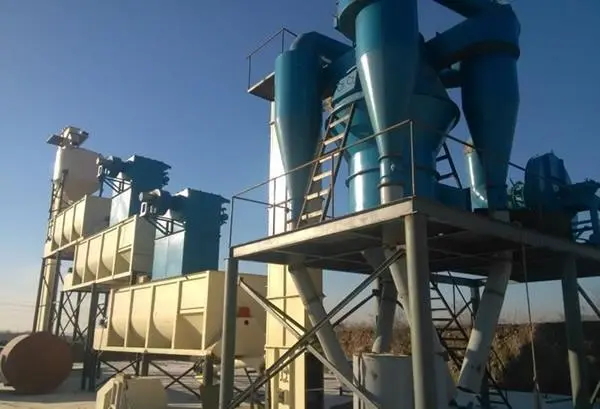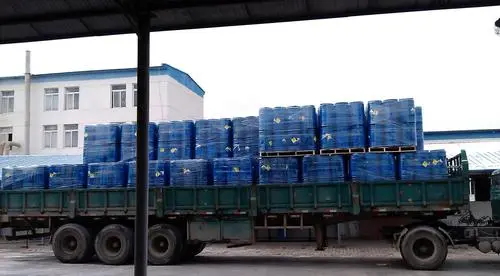In China. According to statistics in 2009, the proportion of liquid chlorine and sodium hypochlorite disinfection processes used in urban water plants is 59.14% (of which sodium hypochlorite accounts for 2.81%), followed by chlorine dioxide disinfection processes, accounting for 32.81%. , 0.85% of the water plants use other disinfection processes, and the proportions from large to small are chloramine, chlorine + chlorine dioxide combination, ozone, and ultraviolet disinfection processes.
Belgium, Finland, the United Kingdom, Germany, and Ireland mainly use liquid chlorine for disinfection, the Netherlands uses ozone disinfection most commonly, and France uses liquid chlorine, chlorine dioxide, and ozone.
In recent years, the proportion of chlorine disinfection technology in the United States has shown a downward trend. This shows that the drinking water disinfection method in the United States is changing. The main driving force for this change is the safety of disinfectants and the control of disinfection by-products.
Overall, liquid chlorine disinfection is still the most important disinfection process in the world. There are some differences in the disinfection process in water plants of different scales.
Development Trend
of Disinfection Process Disinfection process has been continuously developing and improving for more than 100 years. In addition to focusing on the selection of disinfectant and the optimization of disinfection process operation, the research on disinfection process also focuses on the renovation of disinfection equipment and different forms of combined disinfection methods, such as pre-oxidation + disinfection Some progress has been made in the joint disinfection process, the sequential disinfection process of physical + chemical disinfection, and the mixed disinfection process of chemical + chemical disinfection. Especially the combined disinfection process, because of its certain synergistic effect, can avoid the defects of the single disinfection process and improve the reliability and safety of the disinfection process. It is a disinfection method with relatively mature research and the brightest application prospects. At the same time, new disinfection processes have also emerged one after another, such as chemical disinfection processes such as metal ion disinfection, tea polyphenol disinfection, photocatalytic oxidation, and physical disinfection processes such as ultrasonic, micro-electrolysis, and magnetization disinfection, but are limited by equipment, water quality, and economic conditions. There is no wide-scale application yet.
From the perspective of development trend, the United States and the European Union mainly focus on ultraviolet, electrochemical and oxidation disinfection in the 21st century; Disinfection process, there are few researches on disinfection processes such as new electrochemistry.
Liquid chlorine disinfection by-products and its control technology
When liquid chlorine disinfection is at a pH of 6-8, the CT values of 99% kill rate for Escherichia coli and hepatitis A virus are 0.9-2.7 mg/(L·min) and 1.8 mg/ (L min), and the residual chlorine has continuous disinfection ability, which can ensure the microbial safety of drinking water in the pipe network. However, liquid chlorine disinfection is not effective in killing chlorine-resistant bacteria and cryptosporidium. Liquid chlorine is a hazardous chemical and requires a high level of protection.
The reduction in the utilization rate of liquid chlorine disinfection process is not only related to the safety of liquid chlorine, but also mainly due to the risk of chlorine disinfection by-products.
Formation of disinfection by-products of liquid chlorine More
than 700 kinds of disinfection by-products have been found so far, trihalomethanes and haloacetic acids accounted for 45%-64% and 30%-39% of the known disinfection by-products, followed by trichloroacetaldehyde, Haloketones, haloacetonitriles, etc. The concentrations and types of disinfection by-products in the effluent of chlorine disinfection process water plants in the world are closely related to regions, seasons, water quality, and water treatment processes.
Liquid chlorine disinfection by-product control technology
At present, chlorine disinfection by-product control technology mainly includes three aspects: precursor removal technology, disinfection method optimization and replacement technology, and by-product control technology, of which the first two technologies are most widely used.
Other chlorine-based disinfection processes and their by-product control technology
sodium hypochlorite have better disinfection effects, continuous disinfection capabilities, and are safe and convenient to use. However, sodium hypochlorite disinfection is not effective in killing “two insects”, and it will also produce chlorinated disinfection by-products, and may decompose to produce chlorate, so it is not suitable for long-term storage. Sodium hypochlorite can replace liquid chlorine for disinfection, and is more suitable for the application of small water plants.
Chloramine disinfection is widely used in the United States. However, the killing effect of chloramine on the two insects is average. Chloramine disinfection by-products are mainly hydrophilic chloral, haloacetonitrile, etc., and may produce nitrogen-containing disinfection by-products of nitrosamines with strong carcinogenic risk.
Chlorine dioxide disinfection by-products and its control technology
At the beginning of the 21st century, about 2,000 water plants in Europe, 600 water plants in the United States and Canada, and more than 70% of water plants in Germany used high-purity chlorine dioxide for disinfection. Domestic chlorine dioxide disinfection is also the second largest disinfection process after chlorine. Chlorine dioxide has a good killing effect on spores, viruses, algae, iron bacteria, sulfate-reducing bacteria and fungi. Domestic small and medium-sized water plants are widely used.
Chlorine dioxide disinfection by-product risk
AWWA1998 survey results in the United States show that the average concentrations of chlorite and chlorate in the outlet water (pipe network water) of large and medium-sized water plants in the United States are 0.29 (0.42) mg/L and 0.16 ( 0.27) mg/L, the maximum concentrations are 1.14 (1.24) mg/L and 1.24 (0.98) mg/L respectively, there is a risk of exceeding the standard. In 2011, the Ministry of Health conducted a survey of 376 chlorine dioxide disinfection water plants across the country, showing that the excess rates of chlorite and chlorate were 6.27% and 1.6% respectively; The rate of chlorine dioxide by-product exceeding the standard in 25 water plants reached 20% and 76% respectively. When the
chlorine dioxide disinfection by-product control technology
uses a mixed generator , the sources of chlorate include the introduction of the generator, the self-decomposition of chlorine dioxide and the reaction with the water body, the proportions are 43%~54%, 10%~13%, respectively. 36%~44%; when using a high-purity chlorine dioxide generator , the proportions are 0, 20%, and 80% respectively. The main source of chlorite is the decomposition of chlorine dioxide itself and the reaction with water. When using a high- purity generator , the two ratios are 6% and 94%, and the amount of chlorite generated is about 67% of the chlorine dioxide consumption. The hybrid generator chlorite production is about 49% of the chlorine dioxide consumption, because the chlorine produced by the hybrid generator oxidizes the chlorite.
Chlorate control techniques can be divided into source control, formation inhibition, and reaction process control.
Other disinfection processes and by-product control technologies
Ozone has a good disinfection effect, short contact time, and can kill viruses, insects, etc. It can not only improve the sensory indicators of water, but also reduce chlorinated by-products. Ozone has no continuous disinfection ability and needs to be used in combination with liquid chlorine and other disinfectants; the operating cost is high; equipment investment is large and management is difficult; and when bromide ions exist, by-products such as bromate and formaldehyde are easily formed.
National “Eleventh Five-Year” major project of water pollution control and treatment science and technology “key technology and systematic integration of advanced treatment process in southern hot and humid areas” subject “ozonation process by-product control technology”, proposed bromate formation suitable for water quality in the Pearl River Delta Based on the empirical prediction model, aiming at the main influencing factors of bromate generation, the whole process control technology of ozonation by-products is formed before, during and after the event. According to the Br- concentration level, the ozone contact pool optimization, pH reduction, ammonia addition, high Potassium manganate composite oxidation and hydrogen peroxide dosing advanced oxidation and other control technologies.
Ultraviolet disinfection effectively kills viruses and bacteria, with fast bactericidal effect and good effect; no chemical agents are added, no disinfection by-products; convenient operation and simple management. However, the operating cost of ultraviolet disinfection is high; and there is no continuous disinfection effect, and it needs to be used in combination with liquid chlorine and other disinfectants; it is easily affected by water quality, lamp power, and irradiation time.
Domestic and foreign disinfection processes are applied
- 4:18 pm
- August 16, 2022





